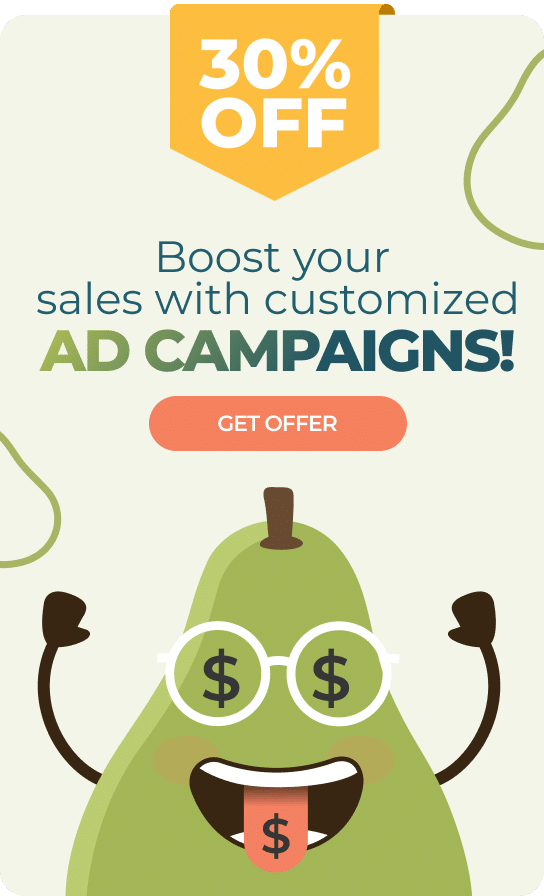Marketing success isn’t about who spends the most — it’s about who spends the smartest. For small businesses, cost-effective digital marketing isn’t just a nice-to-have; it’s a survival strategy.
Instead of chasing every new trend, focusing on proven, budget-friendly strategies allows you to maximize your impact without stretching your resources thin. From smart content creation to targeted ads and strong local SEO practices, there are countless ways to drive growth without breaking the bank.
Moreover, adopting a cost-effective digital marketing mindset means staying agile. Markets shift, algorithms change, and customer preferences evolve — but with the right foundation, small businesses can adapt quickly and maintain consistent progress.
Why Cost-Effective Digital Marketing Matters for Small Businesses
Small businesses often operate with tight budgets, making every marketing dollar count. This is where cost-effective digital marketing becomes essential. By leveraging affordable digital strategies, small businesses can achieve a strong return on investment (ROI) without the massive budgets that larger corporations typically have.
Moreover, cost-effective digital marketing levels the playing field. A well-optimized website, a smart content strategy, and active social media profiles can allow a small business to compete with much larger companies. Unlike traditional marketing channels, where reach often correlates with spending power, digital marketing rewards creativity, consistency, and strategic thinking.
Transitioning to digital not only saves money but also opens up opportunities to connect directly with consumers. In short, adopting a cost-effective approach can be a game-changer for small businesses aiming to scale sustainably.
Define Your Goals and Audience for Maximum Impact
Before diving into campaigns, it’s crucial to define clear goals and understand who your audience is. Without specific, measurable objectives, even the most cost-effective digital marketing strategies can fall flat. Setting goals helps you focus resources, track progress, and optimize efforts over time. Whether you aim to increase website traffic, boost conversions, or grow your email list, clarity at the outset is key to maximizing your marketing investment.
Additionally, understanding your audience saves both time and money. Knowing their needs, preferences, and online behaviors allows you to create highly targeted campaigns that resonate. Effective targeting is at the heart of cost-effective digital marketing because it ensures that every piece of content, ad, or email serves a defined purpose.
Leverage Content Marketing: High Value, Low Cost
Content marketing is a cornerstone of cost-effective digital marketing. With a small investment, businesses can build authority, foster trust, and drive consistent traffic over time. Creating valuable resources like blog posts, e-books, and newsletters helps position your brand as an industry leader while nurturing potential customers.
Benefits of content marketing include:
- Long-term visibility: A well-written blog post can generate leads for months or even years.
- Audience trust: Educational content strengthens customer relationships.
- Cost efficiency: Compared to paid ads, content offers lasting returns.
To maximize efficiency, repurpose your best content across multiple formats. For instance, a detailed blog post can be transformed into:
- Social media posts
- Infographics
- Video explainers
- Email campaigns
By repurposing assets, small businesses can amplify their reach without additional production costs, making content a true pillar of cost-effective digital marketing.
Social Media: A Powerful Tool for Cost-Effective Digital Marketing
Social media platforms offer one of the most dynamic avenues for cost-effective digital marketing. However, not every platform is right for every business. Choosing the right channels based on your audience demographics ensures that your efforts generate meaningful results without wasted resources.
When selecting platforms, consider:
- Age and interests of your audience
- Type of content you produce (visual, text-based, short-form videos)
- Where your competitors are most active
For organic growth and low-budget advertising, follow these best practices:
- Post consistently: Build familiarity and engagement.
- Use hashtags strategically: Expand your reach without paying for ads.
- Engage with your community: Comment, reply, and foster two-way conversations.
If you choose to invest in paid social ads, start small with highly targeted campaigns. Even a minimal ad spend can yield strong results when combined with a well-thought-out organic strategy.
Email Marketing: Still One of the Most Cost-Effective Digital Marketing Tools
Email marketing consistently ranks as one of the top methods for cost-effective digital marketing. According to HubSpot, email generates an average ROI of $42 for every $1 spent — making it an unbeatable tool for small businesses aiming to maximize impact on a budget.
Key best practices for successful email marketing:
- Build your list organically: Use lead magnets like free resources, discounts, or webinars.
- Segment your audience: Personalize emails based on behavior, location, or preferences.
- Focus on value: Provide useful content rather than just promotional messages.
“The money is in the list” — a timeless truth for digital marketers.
Additionally, nurturing your list with regular, value-driven emails helps build trust and loyalty over time. Unlike social media, where algorithms can limit your reach, your email list is entirely owned by you — reinforcing why email remains a core pillar of cost-effective digital marketing strategies.
Search Engine Optimization (SEO): Boost Visibility Without Breaking the Bank
Search Engine Optimization (SEO) is one of the smartest investments a small business can make when pursuing cost-effective digital marketing. While SEO does require an investment of time and resources, it is significantly more affordable than running continuous paid ad campaigns. Unlike paid ads — which stop generating traffic the moment you stop paying — SEO builds a strong, lasting foundation for organic visibility.
Over time, a well-optimized website attracts consistent visitors without the need for ongoing spend, making SEO an essential long-term strategy for businesses aiming to maximize results while keeping costs under control. Fundamental on-page SEO elements include:
- Optimizing page titles and meta descriptions
- Using relevant keywords naturally
- Structuring content with headers (H1, H2, H3)
- Improving page speed and mobile friendliness
In addition to on-page basics, consistent content updates play a critical role in SEO success. A simple blog strategy, publishing one or two posts per month, can significantly boost visibility over time.
Pay-Per-Click (PPC) Advertising on a Budget
When executed properly, PPC advertising can be a powerful addition to your cost-effective digital marketing strategy. A well-planned and optimized campaign has the potential to deliver remarkable results even with a limited budget. However, it’s important to remember that PPC is still a paid method — and costs can vary depending on your industry and competition.
With this in mind, it is important to know very well all the tips and tricks before getting into the world of advertising for your business, taking care of every penny. Here are some tips for running successful small-scale PPC campaigns:
- Start with highly targeted keywords to reduce costs and increase relevance.
- Use geo-targeting to focus only on your ideal customer locations.
- Continuously monitor and adjust your ads based on performance data.
- Set strict daily or monthly budgets to control spending.
Don’t forget: “A dollar spent wisely is worth far more than ten dollars wasted.”
Focusing on Google Ads and social media ads (like Facebook and Instagram) allows small businesses to reach the right audiences without overspending. With careful management, PPC can complement your organic efforts and keep your cost-effective digital marketing strategy balanced.
Maximize Local SEO for Greater Cost-Effectiveness
For small businesses serving specific geographic areas, local SEO is a crucial part of any cost-effective digital marketing plan. Optimizing your Google Business Profile (formerly Google My Business) ensures that your company shows up when nearby customers search for your products or services — without the hefty price tag of traditional advertising.
Key steps to strengthen your local SEO:
- Claim and fully optimize your Google Business Profile.
- Use local keywords in your website’s titles, descriptions, and content.
- Keep your name, address, and phone number (NAP) consistent across all listings.
- Upload high-quality photos regularly (storefront, products, team) to make your profile more appealing and trustworthy.
- Choose the right categories for your business — be specific (e.g., “Vegan Bakery” instead of just “Bakery”).
- Update your business hours frequently, including holiday changes, to avoid customer confusion.
- Enable messaging, so potential customers can contact you directly through your profile.
- Post updates and promotions using the “Posts” feature to keep your profile active and engaging.
- Answer common questions by filling out the Q&A section proactively, instead of waiting for users to ask.
- Respond to every review — positive or negative — to show engagement and boost trust.
By prioritizing local SEO efforts, businesses can significantly increase foot traffic and online visibility, making it a highly valuable component of a cost-effective digital marketing strategy.
Track Your Results to Keep Your Digital Marketing Cost-Effective
No matter how carefully you plan, no cost-effective digital marketing strategy can succeed without regular performance tracking. Without measuring your results, even the smartest investments can quietly turn into wasted spending — and you might not realize it until it’s too late. Key metrics every small business should monitor:
- Website traffic: Understand where your visitors come from and what actions they take.
- Conversion rate: Measure how many visitors complete a desired action, such as making a purchase or signing up.
- Customer acquisition cost (CAC): Know how much you’re spending to acquire each new customer.
- Return on ad spend (ROAS): Evaluate the profitability of your advertising campaigns.
- Email open and click-through rates: Analyze the effectiveness of your email marketing efforts.
- Social media engagement: Track likes, shares, comments, and follower growth across platforms.
- Bounce Rate: Measures the percentage of visitors who leave your site after viewing only one page. A high bounce rate could signal poor content relevance or a confusing user experience.
- Click-Through Rate (CTR): Tracks how often people click on your ads or emails after seeing them. A strong CTR indicates that your messaging resonates with your audience.
- Cost Per Click (CPC): In paid campaigns, this shows how much you pay for each click. Monitoring CPC helps ensure you stay within budget while maximizing ad performance.
- Lead Generation Rate: Measures the percentage of visitors who become leads through actions like form submissions or sign-ups. It’s crucial for evaluating the effectiveness of your marketing funnel.
- Organic Search Traffic: Focuses on visitors who find your site through unpaid search engine results. Growth in organic traffic is a strong indicator of successful SEO efforts
By using data-driven decisions, businesses can quickly identify what’s working and where improvements are needed. This approach not only reduces waste but ensures that every dollar spent strengthens your overall cost-effective digital marketing strategy.


